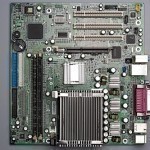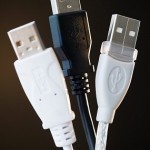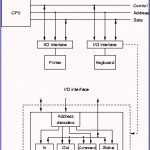PCI Express (Peripheral Component Interconnect Express/PCI-E) is a new computer format for motherboards that allows expansion. It was introduced to phase out PCI expansion and the AGP graphics interface card. PCI Express makes a computer much faster, significantly improves the machine’s graphics performance, and does error checking. It also allows a computer to connect to peripheral devices such as hard drives, cd players, cameras, keyboards, printers, mouses, monitors, USB devices, etc. Traditional PCI has several limitations. It has a fixed width of 32 bps and can handle only five devices Read More
Supercomputer
A supercomputer is any machine that is is the most up to date and fastest computer available on the market, especially when it comes to its ability to handle calculations. In other words, they are at the frontline of processing capacity and are able to handle different calculations and processes that other computers would be unable to handle. A supercomputer's primary use is to handle tasks that are calculation-intensive. For example, calculations in quantum physics, molecular modeling and nuclear weapon detonation simulations would need a supercomputer. A category of tasks Read More
How to Clean a Keyboard
Step-by-Step Method for Thoroughly Cleaning a Keyboard Step One: Disconnect the keyboard from the computer and any other power source it may be plugged into. Step Two: Using an object that can create a small amount of leverage (such as your house key), remove the individual keys from your keyboard. Simply use the house key or other object to wedge underneath each key and gently pop them off of the keyboard. Step Three: Once all of the keys are removed from the keyboard, you can begin cleaning the keys by Read More
Lightning Arrester

A lightning/surge arrester is a device that protects structures from electrical damage by intercepting lightning surges and diverting them to the ground. Lightning arresters are connected directly to the ground via low resistance cables, although they are generally mounted on high buildings or other structures in order to attract electricity. They can be used on land and in sea, with the latter version using the water to discharge electricity. Lightning arresters are available in many different forms and are used in a variety of applications. How to Design Lightning Arresters Read More
EEPROM (Electrically Erasable Programmable Read-Only Memory)
EEPROM stands for Electrically Erasable Programmable Read-Only Memory. An EEPROM is like an EPROM chip since it can be written in or programmed more than once. Unlike the EPROM chip, however, an EEPROM chip need not be taken out of the computer or electronic device of which it is part when a new program or data needs to be written on it. Selective programming can be done to an EEPROM chip. The user can alter the value of certain cells without needing to erase the programming on other cells. Thus, Read More
How to Identify a Motherboard

Computer users who intend to own their computer for a prolonged period of time should be able to identify the computer’s motherboard in order to conduct upgrades. The motherboard type affects computer BIOS upgrades, new CPU installations, and determines the maximum amount of RAM that the motherboard supports. A computer’s motherboard can be identified in the following ways: visually, from the BIOS, and from the BIOS string. Once the motherboard is identified, compatible upgrade components should be installed on the computer. How to Identify a Motherboard through Visual Inspection Step Read More
ECC Memory
ECC (Error Correction Codes) is a method used to detect and correct errors introduced during data storage or transmission. Certain kinds of RAM chips inside a computer implement this technique to correct data errors and are known as ECC Memory. ECC Memory chips are predominantly used in servers rather than in client computers. Memory errors are proportional to the amount of RAM in a computer as well as the duration of operation. Since servers typically contain several Gigabytes of RAM and are in operation 24 hours a day, the likelihood Read More
USB Pinout

The Universal Serial Bus (USB) interface connects peripherals in a variety of ways. These peripherals include the standard and non-standard computer mouse, keyboards, gaming controllers, scanners, printers, digital cameras, hard disks, CD/DVD-Rom drives, card media devices, music devices, speakers, and networking components. A variety of other devices that use USBs as well as devices that may use the USB pinout design to provide power, access data, or distribute the connections are available. Standard USB 1.1 can output data at 12Mbit/s, while USB 2.0 can output up to 480Mbit/s. This large Read More
MicroSD Cards
MicroSD cards are the newest and smallest flash memory secure digital cards available, much smaller than both standard SD memory cards and even Mini SD memory cards. MicroSD cards were created by SanDisk Corporation and were introduced into use in 2006. These cards were created to be used with mobile phones; however other applications such as GPS receivers, digital cameras and Mp3 players do exist. Super Small Micro Size The microSD card is extremely small, only about one-fourth of the size of a standard SD memory card. It can be Read More
PIO (Programmed Input/Output)

PIO is Programmed I/O. PIO is the oldest method is transferring memory over a IDE/ATA interface. The technique of a PIO involves using the CPU and support hardware to control the transfer of memory between the system itself and the hard drive. The speed of the PIO is called a PIO Mode. It starts at Mode 0 and increases with each mode having a faster cycle rate in nanoseconds. So, quite obviously, higher modes are better due to the fact that memory can be transferred so much faster due to Read More


Share on: